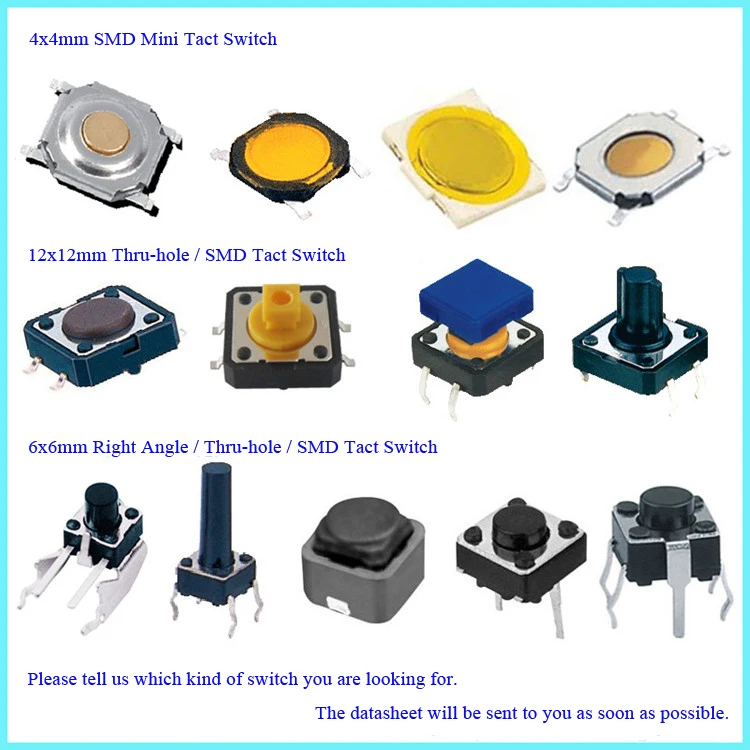
When it comes to electronic components, few things are as important as understanding their specifications. In the realm of tactile switches, this knowledge becomes even more crucial. Whether you are an electronics enthusiast or a professional engineer, comprehending the intricacies of a 4-pin tactile switch datasheet is essential for successful integration into your projects.
The datasheet of a tactile switch holds the key to unlocking its true potential. It is a treasure trove of information that provides detailed insights into the switch’s functionality, performance, and limitations. By taking the time to thoroughly examine and decipher this document, you will be equipped with the necessary knowledge to select the right switch for your specific application.
In this article, we will dive deep into the specifications of a 4-pin tactile switch, enabling you to grasp the nuances and make informed decisions. From electrical ratings to mechanical characteristics, we will explore each aspect, shedding light on the intricate details that often get overlooked. By the end of this guide, you will have a comprehensive understanding that will empower you to utilize this versatile component in a multitude of electronic designs.
Understanding the Basics of 4 Pin Tactile Switches

In this section, we will delve into the fundamental aspects of 4 pin tactile switches, exploring their key functionalities and operational principles. By gaining a clear understanding of these switches, you will be able to better comprehend their various applications and benefits.
1. Structure
- Construction: The 4 pin tactile switch consists of several components, including a metal dome, a base plate, and four pins.
- Mechanism: These switches utilize a spring-loaded mechanism, which allows for the actuation of the switch when a force is applied.
- Contact Materials: The switch’s pins make contact with conductive materials, typically gold-plated, to ensure optimal electrical conductivity.
2. Functionality
- Actuation Force: Each 4 pin tactile switch has a specific actuation force, which refers to the amount of pressure required to trigger the switch.
- Tactile Feedback: These switches offer tactile feedback, providing a physical sensation or “click” when pressed, allowing users to have a clear indication of successful actuation.
- Switch Types: There are different types of 4 pin tactile switches, such as momentary and latching switches, each serving specific purposes and applications.
3. Applications
- Consumer Electronics: 4 pin tactile switches are commonly used in various consumer electronic devices, including mobile phones, remote controls, and gaming consoles.
- Industrial Equipment: These switches are also crucial components in industrial equipment, such as control panels and machinery, where reliable switching is essential.
- Automotive Industry: Tactile switches find extensive usage in the automotive industry for applications like dashboard controls, steering wheel buttons, and interior lighting.
By acquainting yourself with the basics of these 4 pin tactile switches, you can make informed decisions when selecting the appropriate switch for your specific application needs. Understanding their structure, functionality, and wide array of applications will enable you to utilize their benefits effectively in your design projects.
Examining the Features and Specifications of 4 Pin Tactile Switches

In this section, we will explore the various characteristics and technical details of 4 pin tactile switches. These compact electronic components are commonly used in a wide range of applications to facilitate user input and control.
When examining the features of 4 pin tactile switches, it is important to consider their design and construction. These switches are typically made with high-quality materials to ensure durability and reliable performance. They are engineered to withstand frequent usage and provide a responsive tactile feedback to the user.
Additionally, 4 pin tactile switches are designed to be easy to install and integrate into various electronic devices. They often have a small and compact form factor, making them suitable for use in space-constrained applications. These switches can be conveniently mounted on a PCB (Printed Circuit Board) or soldered into place.
- Responsive Feedback: 4 pin tactile switches deliver a tactile feedback to the user, providing a physical sensation when the switch is pressed.
- Actuation Force: These switches have a specified actuation force, which determines the amount of pressure required to activate the switch.
- Operating Life: The operating life of a 4 pin tactile switch refers to the number of times it can be pressed before its performance begins to degrade.
- Environmental Considerations: Some 4 pin tactile switches are designed to be resistant to dust, moisture, and other environmental factors, making them suitable for use in various conditions.
- Contact Configuration: These switches can have different contact configurations, such as normally open (NO) or normally closed (NC), allowing for versatile use in different circuit designs.
In conclusion, 4 pin tactile switches are versatile electronic components that offer responsive feedback, have a specified actuation force, and can withstand frequent usage. Their compact design and ease of installation make them suitable for a wide range of applications. Additionally, their contact configuration and environmental resilience contribute to their versatility and reliability in various circuit designs and operating conditions.